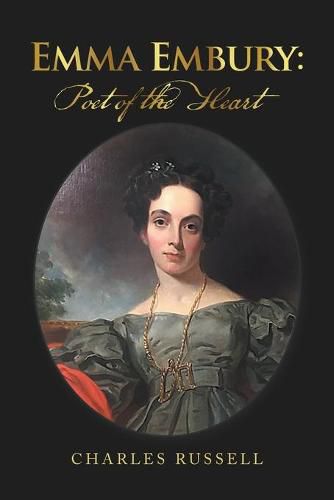Readings Newsletter
Become a Readings Member to make your shopping experience even easier.
Sign in or sign up for free!
You’re not far away from qualifying for FREE standard shipping within Australia
You’ve qualified for FREE standard shipping within Australia
The cart is loading…






This title is printed to order. This book may have been self-published. If so, we cannot guarantee the quality of the content. In the main most books will have gone through the editing process however some may not. We therefore suggest that you be aware of this before ordering this book. If in doubt check either the author or publisher’s details as we are unable to accept any returns unless they are faulty. Please contact us if you have any questions.
Call her majestic. The most popular woman poet of America’s 19th Century literary Renaissance. Her works were prodigious, inclusive, democratic. She published more than four-hundred poems, novels, and essays during her lifetime. She contributed poems to The Knickerbocker Magazine, The Lady’s Companion, Columbian, Godey’s Lady’s Book, Graham’s Magazine, and Religious Souvenir. Her story, Pictures of Early Life, was applauded as highly interesting and instructive; and of a character which should place it in the hands of youth. In 1845 Edgar Allan Poe published her Thoughts of a Silent Man essays in his periodical Broadway Journal. Later. In The Literati of New York City, a scholarly article he wrote for the August 1846 issue of Godey’s Lady’s Book, he classed Emma as one of the principal writers of the time. A precursor of feminism, she wrote, If I were a man, as, thank God, I am not, for among my many blessings I rank first that of being a woman, and gave An Address on Female Education championing higher education for women that was reprinted in Woman and Higher Education, a collection essays by founders of the first women’s colleges. Her Essay on American Literature, was the first to propose that America should support a literary class in society and a national literature. Her skills extended beyond excellence as a writer. She played the piano and other musical instruments, sang in a lovely mezzo-soprano voice, and painted exquisite watercolors for her book Nature’s Gems, the first book on American wildflowers.
$9.00 standard shipping within Australia
FREE standard shipping within Australia for orders over $100.00
Express & International shipping calculated at checkout
This title is printed to order. This book may have been self-published. If so, we cannot guarantee the quality of the content. In the main most books will have gone through the editing process however some may not. We therefore suggest that you be aware of this before ordering this book. If in doubt check either the author or publisher’s details as we are unable to accept any returns unless they are faulty. Please contact us if you have any questions.
Call her majestic. The most popular woman poet of America’s 19th Century literary Renaissance. Her works were prodigious, inclusive, democratic. She published more than four-hundred poems, novels, and essays during her lifetime. She contributed poems to The Knickerbocker Magazine, The Lady’s Companion, Columbian, Godey’s Lady’s Book, Graham’s Magazine, and Religious Souvenir. Her story, Pictures of Early Life, was applauded as highly interesting and instructive; and of a character which should place it in the hands of youth. In 1845 Edgar Allan Poe published her Thoughts of a Silent Man essays in his periodical Broadway Journal. Later. In The Literati of New York City, a scholarly article he wrote for the August 1846 issue of Godey’s Lady’s Book, he classed Emma as one of the principal writers of the time. A precursor of feminism, she wrote, If I were a man, as, thank God, I am not, for among my many blessings I rank first that of being a woman, and gave An Address on Female Education championing higher education for women that was reprinted in Woman and Higher Education, a collection essays by founders of the first women’s colleges. Her Essay on American Literature, was the first to propose that America should support a literary class in society and a national literature. Her skills extended beyond excellence as a writer. She played the piano and other musical instruments, sang in a lovely mezzo-soprano voice, and painted exquisite watercolors for her book Nature’s Gems, the first book on American wildflowers.